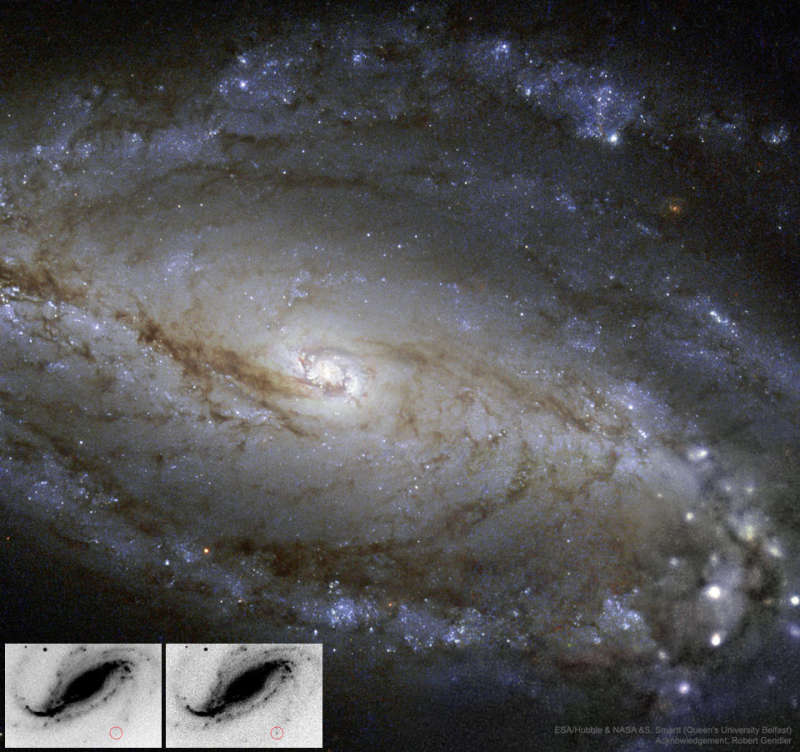Credit & Copyright: NASA,
ESA,
Hubble,
S. Smartt
(QUB);
Acknowledgement:
Robert Gendler;
Insets: Victor Buso
Explanation:
Where did that spot come from?
Amateur astronomer Victor Buso was testing out a new camera on his telescope in 2016
when he noticed a curious spot of light appear -- and remain.
After reporting
this
unusual observation,
this spot was determined to be light from a
supernova
just as it was becoming visible -- in an earlier stage
than had ever been photographed optically before.
The discovery before and after images, taken about an hour apart,
are shown in the inset of a
more detailed image
of the same spiral galaxy,
NGC 613,
taken by the Hubble Space Telescope.
Follow-up observations show that
SN 2016gkg was likely the explosion
of a
supergiant star,
and Buso likely captured the stage where the outgoing
detonation wave
from the stellar core
broke through
the star's surface.
Since astronomers have spent years
monitoring galaxies for supernovas without seeing such a "break out" event,
the odds of Buso capturing this
have been compared to
winning a lottery.
1999 2000 2001 2002 2003 2004 2005 2006 2007 2008 2009 2010 2011 2012 2013 2014 2015 2016 2017 2018 2019 2020 2021 2022 2023 2024 2025 |
Январь Февраль Март Апрель Май Июнь Июль Август Сентябрь Октябрь Ноябрь Декабрь |
NASA Web Site Statements, Warnings, and Disclaimers
NASA Official: Jay Norris. Specific rights apply.
A service of: LHEA at NASA / GSFC
& Michigan Tech. U.
|
Публикации с ключевыми словами:
NGC 613 - spiral galaxy - supernova - Сверхновые - спиральная галактика
Публикации со словами: NGC 613 - spiral galaxy - supernova - Сверхновые - спиральная галактика | |
См. также:
Все публикации на ту же тему >> | |
